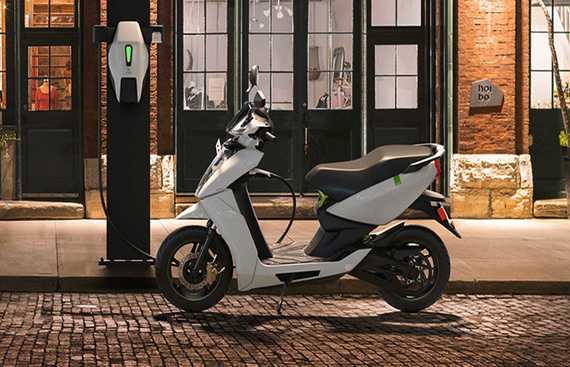India, why the rush with Electric Vehicles?

India has turned up its awareness in having electric vehicles, especially for the electric two-wheeler area. In March, Ola has announced to establish the world’s-largest electric two-wheeler factory in Krishnagiri, Tamil Nadu. The plan was declared by the founder of Ola Electric, Bhavish Aggarwal. Almost worldwide scale would have consumed revenue, as the Indian electric two-wheeler segment has been abounding with new companies and customary two-wheeler makers dispatching new items and putting resources into new limits. While drowning the condition of the Indian economy, the electric two-wheeler sector has been a hope of revival.
In the first three months of 2021, India had initiated eleven new products in the electric two-wheeler sector. There is a possibility to launch more products. Though Ola’s mega factory is also considering exports and revenue of the segment is being directed by internal request. The electric two-wheeler business is raised by over seven times in the past six years, however, this one is on a small base.
Regarding the future, the share of electric vehicles in the total two-wheeler market is appraised to rise from 0.8% in 2020-21 to 12.8% in 2024-25, as per JMK Research & Analytics. There is a high probability of raising a claim for electric vehicles from both individuals, and the delivery and ride-hailing businesses. As per Mckinsey evaluation, the requirement from e-commerce/delivery businesses is likely to rise at a compounded annual rate of 15-30% through 2025. Although initial adopters of electric vehicles incline to be environmentally aware, demand for electric two-wheelers is chiefly determined by economics.
In terms of the total expense of ownership, electric two-wheelers work out 10-20% cheaper than petrol vehicles, shown by a research report of Motilal Oswal Financial Services analysts. Cost elements have shifted in support of its fundamentally due to plunging costs of lithium-particle batteries, all thanks to major manufacturing plants for the most part in China.
Capacity Game
The expanse of an electric vehicle would be cheaper with a drop in battery costs. As per McKinsey evaluations, it typically represents around 40% of the cost of material inputs. Values of batteries have been dropping. BloombergNEF has also reported that lithium-ion battery pack prices have fallen 89% from above $1,100 per kilowatt-hour in 2010 to $137/kWh in 2020.
BloombergNEF supposes this to fall more to $101/kWh by 2023. This could make EVs equivalent in cost to internal combustion vehicles even without subsidies in the certain business sector. In India, EVs presently obtain subsidies through the government’s FAME-2 scheme. By 2030, battery prices could more drop to $58/kWh through, for example, the adoption of solid-state batteries. The previous year, battery prices fell 13% from 2019 levels, be grateful for increasing order sizes, progress in EV sales, and the initiation of novel pack designs, BloombergNEF confirmed.
Chinese Supremacy
China is supreme in investments in battery manufacture. Of the 181 battery mega-factories in different stages of planning and construction, 136 are established in China, as per an Oxford Institute for Energy Studies study.
The country records for 72.5% of the global battery capacity, as per Benchmark Mineral Intelligence. Even though the total battery capacity heightens by the expected six times in the next 10 years, China would hold a 67% share, adds Benchmark.
Over a period when several global businesses are trying to de-risk supplies by cutting down reliance on an only source, it would be crucial for Indian electric two-wheeler manufacturers to look outside China, especially if they are not making investments.
Electric two-wheeler manufacturers could consort with battery cell makers. Volkswagen and General Motors have done undeniably that in Europe and the US respectively.
Energize Re-energize
For Indian electric two-wheeler manufacturers, however, a more instant issue is firming up the network of charging stations. While individual customers are expected to use it for short commutes, businesses are likely to work their vehicles longer every day. McKinsey research recommends a vehicle in an e-commerce swift would cover 90-100 km each day, while one in a food-delivery swift would regulate 120-130 km each day.
While some electric two-wheelers guarantee such a reach on a single charge, the availability of charging stations would be a crucial demand driver. In 2019, the Indian government had apportioned ?1,000 crores to build charging infrastructure under its FAME scheme. Lately, Ola followed up its declaration to establish the world’s largest electric two-wheeler factory with another big plan. It held it would build 100,000 charging stations throughout 400 cities in the following five years. Given India’s existing network of 4,300 stations, that’s a significant distance to cover.
Read More News :
The Next Generation of Purchasing - eCommerce 3.0
NPCI partners PayCore to enable RuPay SoftPOS solutions in India


.jpg)
